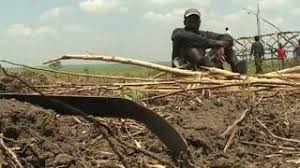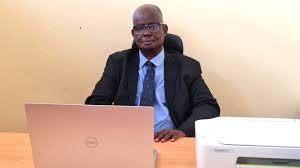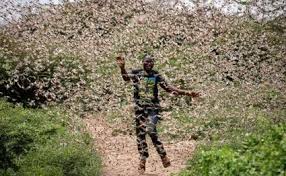Global Politics
UGANDA: APAA, ACHOLI TEAM TO DRAG UGANDA TYRANT TO ICC.

File PHOTO
Calling the audience to view the conflict in Apaa, as such. In this sense, ‘tribe’ functions to show the potency of tribalism in Uganda, rather than its instrumentality or reason for upsurge in as far as Apaa land conflict is concerned. That means, we are less attentive to the crisis but keener to a certain constituency of audience to whom Apaa conflict should be clarified or rationalized as tribal, argues Mamdani.
GULU-UGANDA: Dr. Daniel Komakech, Director of Gulu Research Institute and the current Chairman of Apaa -Acholi Team has called for the International Criminal Court (ICC) intervention on the 17 years Apaa conflict saying the level of anarchy and unimaginable levels of brutality in in the disputed area is extreme.
According to Komakech, their analytic position is that, the ‘tribe’ over simplification of a complex situation in the Apaa land conflict, have fragmented Apaa question into several petty inquiries. And that the site of anarchy, the uncivil center with unimaginable levels of brutality, in a word, this pornography of violence, is abhorrent but thinkable.
He further more argues that constructed therefore as a ‘tribal’ question, the Apaa land conflict elaborates the continuity thesis that the unit of society conflict(s) are; ‘tribal bad politics and tribal bad leadership’.
He revealed that this construct reducible to tribal Acholi versus tribal Madi, whereas is not factual, is nevertheless, thinkable, not within the purview of Acholi-Madi nemesis, but rather, the audience. In a sense, it is to suggest to the audience the continuity thesis of ‘tribe’-centric conflicts.
Komakech says that calling the audience to view the conflict in Apaa, as such. In this sense, ‘tribe’ functions to show the potency of tribalism in Uganda, rather than its instrumentality or reason for upsurge in as far as Apaa land conflict is concerned. That means, “We are less attentive to the crisis but more keen to a certain constituency of audience to whom Apaa conflict should be clarified or rationalized as tribal.” He warns
Outlining reasons, he says that this viewing – tribalisation of Apaa land conflict, is the very basic problem in this conflict because, it has distanced and detached us from the core problem of Apaa, and instead, trivialised it.
He adds that as such, the ‘tribal’ category and conception has not only made the state diagnosis of the conflict as “fixed and unchanging” but also blinded us from ‘seeing’ a more complex danger that lies ahead of us. Although available data counters this ‘tribal’ narratives and points to a more astute embedded political interests quoting (Atkinson & Owor 2013, Odoki 2018, Apaa Crisis Report 2018, Refugee Law Project 2012, Lioba 2013, Serwajja 2014, Weschler 2016), the inversion to tribalism points to more interesting layered complexities
Impact of the Tribal Thesis
Dr. Komakech says it has insinuated an elimination of individual land ownership, and reconstituting it as a ‘tribal land’, with the view of sustaining the ‘tribal’ thesis, and arguing therefore that the said land “belongs to Adjumani (Madi)”. It is this domain upon which a single binary has been drawn; the “tribal” and the ‘reactionaries (bad leaders)”.
He stressed that the ploy has been, a well-choreographed specter of violence to serve the purpose of provoking a semblance of tribal clash in order to undergird the entire deeper nuance on Apaa question.
“What is readily common is that the machete, spear, bow and arrow wielding an unidentified convoy of people, chase the locals from their homes, displace them and effectively occupy the homes.” Dr. Komakech said.
He adds that however, the detailed episode is rather remote and often invisible to a quick eye or a busy scheduled journey maker into Apaa. Homesteads are occupied as the owners are chased. Sites of original ownership and stay, are disremembered through processes of destroying lead proofs.
For example; perennial trees like mango, orange and many others are cut down, graves are decimated with deceased names embolden with ‘Madi’ names. In extreme cases, bodies are exhumed and disrespectfully, scattered in the wilderness. In one oving case, Akello, a victim of this pornography of violence cried out; “The grave of my husband was ripped open and the remains thrown into the bush!”.
He further says Lalam, another widow cries out; “I have never seen this abomination in my life. How can Madi disrespect my husband’s grave to an extent of re-inscribing the grave with a Madi name?” As these two complete their emotionally confronting stories, the audience burst, with the female audience wailing while the male audience keep silence but some vividly seen in tears, Komakech lamented
Adds that provocations are also doubled, effected in the bodily integrity harm and psyche. Men are beaten and chased in the full view of their wives while the wives are often molested or raped, he notes.
Dr. Komakech wonder, says the children are easily whisked off their land and ran towards the trading center to join countless other children and parents now displaced in the trading centers. Traumatized at the episodes of being chased in the full view of their wives and the wives equally chased or molested in the full view of their men, both sit quiet in their new makeshifts in the displaced camps in the trading centers, quietly recounting the moments
Context of the Apaa Team and Apaa Committee
Dr. Komakech equally referring to, “the Daily Monitor of 26th August, 2018 carried a story under the headline, Positive Move on Apaa Land Wrangle, in which President Museveni decided to camp in Gulu for three days in an effort to resolve the Apaa land question. Meeting the leaders of Acholi and Madi, at Gulu State Lodge in Gulu, he directed that a committee comprising of the two tribes be established to study and choose an option from the three that he had suggested.”
The options issued on Wednesday August 22, 2018, were as follows; the first being, relocation of the people of Apaa elsewhere in Acholi and fully compensating them. Second, allowing people of Apaa to stay on the land by degazeting 25 square kilometers of land in the game reserve for their settlement.
Third, get another portion of land in Adjumani in Madi to resettle the local people.
As it were, the 16-member committee, eight (8) from Acholi and an equal number from Madi as well, was instituted under the Chairmanship of the Prime Minister Dr. Ruhakana Rugunda, to study the three proposals and jointly choose one.
The first meeting took place at the State Lodge in Gulu on 6th September, 2018, while the second one was on 20th September, 2018 and many other series of meetings in Prime Minister Ruhakana Rugunda’s offices in Kampala and the last so far taking place in Gulu State Lodge.
However, two weeks ago Grace Kwiyocwiny, the State Minister for Northern Uganda presented cabinet paper before Uganda cabinet which approved UGX 10 million for each resident of Apaa, and 20 iron sheets as part of compensation.
The move seems to be a well-planned strategy for the current land grabbing taking place in Acholi Sub Region, but MPs for Acholi Parliamentary Groups (APG) a loose caucus rejected the cabinet positions..




Thanks for another informative site. Where else could I get that kind of information written in such a perfect way? I have a project that I am just now working on, and I have been on the look out for such info.